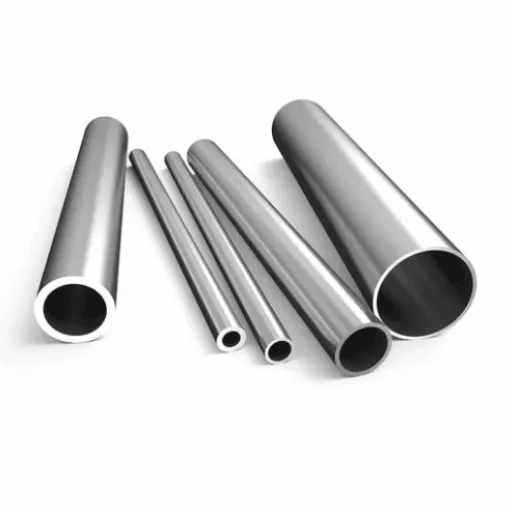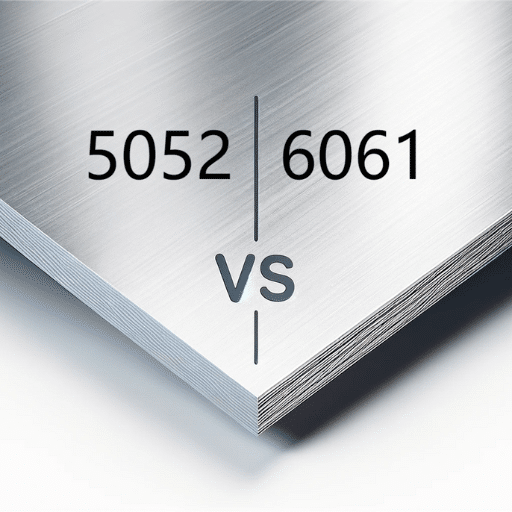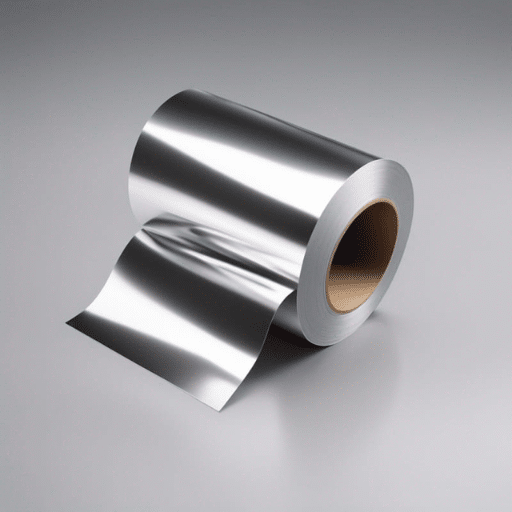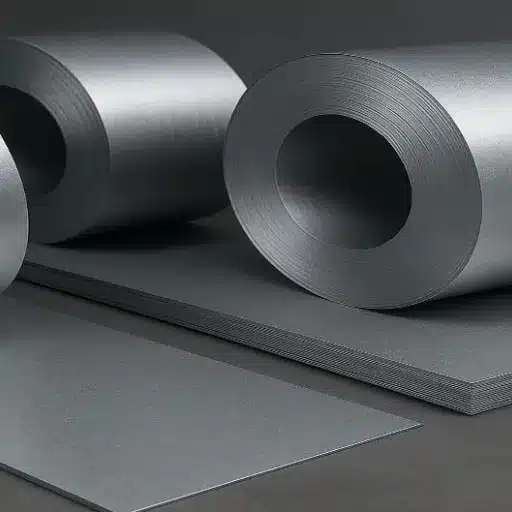Stainless steel tubing plays a critical role across numerous industries, from food and beverage to pharmaceuticals and industrial manufacturing. However, selecting the right tubing specification is essential to ensure optimal performance, compliance, and durability. Two of the most commonly referenced standards in this domain are ASTM A270 and ASTM A269, each designed with specific applications and performance criteria in mind. This article provides a detailed comparison of these two standards, explaining their key differences and guiding you in choosing the most suitable option for your project. Whether you’re prioritizing hygiene, precision, or structural resilience, understanding these distinctions will empower you to make informed decisions that align with your operational needs.
What Is Stainless Steel Tubing?
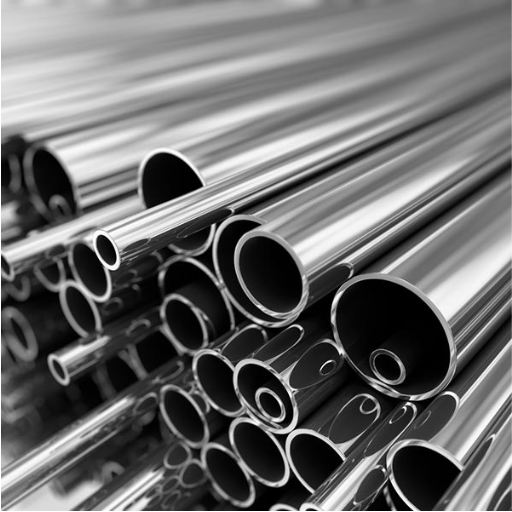
Stainless steel tubing is a versatile and durable material made from an alloy of steel and chromium, designed to resist corrosion and provide strength in a wide range of applications. It is widely used in industries such as food processing, pharmaceuticals, automotive, and construction due to its hygienic properties, pressure tolerance, and resistance to rust and chemical exposure. Stainless steel tubing is available in various grades, sizes, and forms, making it suitable for both structural and fluid transport purposes.
Characteristics of Stainless Steel
- Corrosion Resistance
Stainless steel exhibits exceptional resistance to corrosion due to its chromium content, typically ranging from 10.5% to 30%. This forms a thin, protective oxide layer on its surface, preventing rust and deterioration even in harsh environments.
- Strength and Durability
Depending on the grade, stainless steel offers tensile strengths ranging from 50,000 psi (344 MPa) to over 300,000 psi (2,068 MPa). Its durability and ability to withstand mechanical stress make it ideal for demanding applications.
- Thermal and Chemical Resistance
Stainless steel maintains structural integrity at high temperatures, with heat resistance up to approximately 1,500°F (815°C) for certain grades. Additionally, its resistance to acids, alkalis, and other aggressive chemicals makes it suitable for industry-specific environments.
- Hygienic Properties
The smooth, non-porous surface of stainless steel prevents bacterial buildup and is easy to clean, which is a critical feature in food processing and pharmaceutical applications.
- Fabrication Versatility
Stainless steel can be easily welded, machined, and formed into complex shapes without losing its mechanical properties, offering flexibility in design and manufacturing processes.
- Aesthetic Appeal
Stainless steel’s distinct shiny finish and resistance to tarnishing make it visually appealing for architectural and decorative uses.
- Eco-Friendliness
Being 100% recyclable, stainless steel supports sustainable development, reducing environmental impact over its lifecycle.
Applications of Sanitary Tubing
- Food and Beverage Processing
Sanitary tubing is used to transport liquids, gases, and semi-solids in food and beverage production while maintaining strict hygiene standards to prevent contamination.
- Pharmaceutical Manufacturing
Designed to meet stringent cleanliness requirements, sanitary tubing facilitates the transfer of chemicals or active ingredients in pharmaceutical production.
- Dairy Industry
Sanitary tubing is crucial for milk collection and processing systems, ensuring that the product remains free from impurities and meets regulatory standards.
- Biotechnology and Life Sciences
Used in biotech labs and facilities, sanitary tubing supports sterile fluid transfer and ensures the integrity of sensitive biological and chemical materials.
- Brewing and Distillation Systems
From craft breweries to large-scale distilleries, sanitary tubing is employed to transport and process liquids under hygienic conditions, preserving quality and taste.
Why Choose High Purity Tubing?
When it comes to critical applications requiring strict hygiene and precision, high purity tubing is the optimal choice. It minimizes contamination risks, ensuring that fluids remain uncontaminated and compliant with industry standards. Its durable, non-reactive materials maintain the integrity of transported substances, even under extreme temperatures or pressures. Designed for demanding environments like biotechnology, food production, and pharmaceuticals, high purity tubing provides superior performance, easy sterilization, and regulatory compliance, making it indispensable for maintaining product quality and safety.
Comparing ASTM A270 and ASTM A269
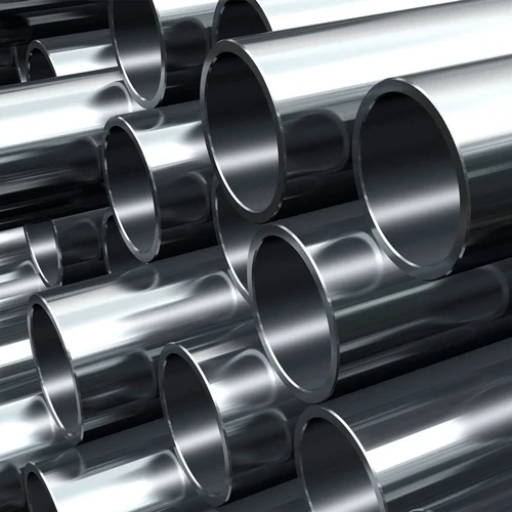
ASTM A270 and ASTM A269 are both specifications for stainless steel tubing, with A270 focusing on sanitary applications and A269 designed for general industrial use.
|
Parameter |
ASTM A270 |
ASTM A269 |
|---|---|---|
|
Application |
Sanitary use |
Industrial use |
|
Finish |
Polished |
Unpolished |
|
Tolerance |
Tight |
Standard |
|
Material Grade |
High purity |
General grade |
|
Sterilization |
Required |
Not required |
|
Surface Quality |
Smooth |
Variable |
|
Industry |
Pharma, Food |
General |
|
Inspection |
Stringent |
Standard |
|
Compliance |
Regulatory |
Non-specific |
Key Specifications of A270 Tubing
ASTM A270 tubing is designed specifically for sanitary applications, with stringent requirements to ensure cleanliness, durability, and performance. Below are the key technical specifications and highlights:
1. Material Composition
-
- Typically manufactured from austenitic stainless steel grades such as 304/304L and 316/316L, ensuring high corrosion resistance and suitability for hygienic environments.
- Surface Finish
- Interior surface roughness is critical for cleanliness and is typically measured in terms of roughness average (Ra). A270 tubing often has finishes such as electropolished or mechanically polished to achieve Ra values of ≤20 microinches (0.5 μm) for pharmaceutical-grade, and ≤32 microinches (0.8 μm) for food-grade applications.
- Dimensions and Tolerances
- Tube sizes generally range from 1/2″ to 6″ in outside diameter (OD). Dimensional tolerances are tight, ensuring precise and consistent results, often with OD tolerances of ±0.010″ and wall thickness tolerances of ±10%.
- Cleanliness and Sterilization
- A270 tubing is designed for cleanability, featuring smooth interior surfaces that resist bacterial growth. Tubes are often supplied in a passivated and cleaned condition, ready for high-purity or sterile environments.
- Testing and Compliance
- A270 tubes undergo rigorous inspections, including hydrostatic or nondestructive testing to verify integrity. They comply with ASME BPE (BioProcessing Equipment) standards for industries like pharmaceuticals and adhere to FDA, 3A, and other regulatory standards.
- Applications
- Widely used in industries such as pharmaceuticals, food and beverage, biotechnology, and high-purity chemical processing, where hygiene and material integrity are crucial.
Understanding Requirements of ASTM A269
ASTM A269 specifies the standard requirements for seamless and welded stainless steel tubing for general corrosion-resisting applications. This specification covers several grades of austenitic stainless steel and defines critical parameters such as chemical composition, mechanical properties, and manufacturing tolerances.
Key requirements include the material’s tensile strength, yield strength, and elongation properties, which must comply with specified minimum values. The standard also mandates nondestructive electric tests or hydrostatic testing to evaluate tubing integrity and ensure that tubes are free from manufacturing defects. Dimensional tolerances, including wall thickness, outer diameter, and straightness, are strictly monitored to align with application-specific needs. Additionally, the standard highlights the importance of surface finish, particularly for applications where cleanliness and resistance to oxidation are priorities.
ASTM A269 is primarily applied in industries such as chemical processing, food production, and other areas where corrosion resistance and purity are essential. Ensuring compliance with these criteria is critical for operational efficiency and adherence to regulatory demands.
Differences in Surface Finish and Polish
Surface finish and polish, while related, refer to distinct aspects of material treatment and performance, particularly in critical applications. Surface finish typically denotes the texture and smoothness of a material’s surface, measured in terms of roughness parameters (Ra, Rz), which are quantified in micrometers (μm) or microinches. A lower Ra value indicates a smoother surface. For example, Ra ≤ 0.8 μm is often specified in industries like food processing or pharmaceuticals to ensure proper cleanability and limit bacterial growth.
Polish, on the other hand, refers to the optical and aesthetic quality achieved on the surface of the material, often through mechanical or chemical processes. While polished surfaces may result in improved appearance or reduced friction, they may not always correspond to improved surface finish if underlying textural irregularities remain. High-polish surfaces often achieve a mirror-like reflection and may be rated using terminology like No. 4 finish (brushed) or No. 8 finish (mirror).
The choice between surface finish and polish largely depends on the application. For instance, a high-end polished No. 8 mirror finish may be ideal for architectural applications, whereas Ra ≤ 0.6 μm might be necessary for sanitary piping systems to meet hygienic standards. Ensuring that the parameters chosen align with both functional and regulatory requirements is critical for optimized performance.
Exploring the Surface Finish and Polish of Tubing
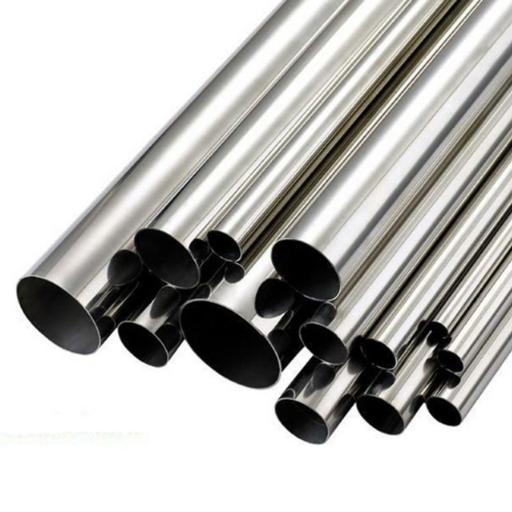
Key Considerations for Surface Finish and Polish in Tubing
To address the questions around surface finish and polish, the optimal choice depends primarily on the intended application and the associated standards. For example:
- Architectural Applications: A No. 8 mirror finish is favorable for aesthetic purposes due to its reflective quality and smooth appearance.
- Hygienic Systems: Applications like sanitary piping require finishes such as Ra ≤ 0.6 μm to minimize microbial adherence and ensure compliance with industry standards, such as those specified by FDA or ISO.
- Industrial Uses: Semi-polished finishes (e.g., No. 4) or mill finishes might suffice where functionality outweighs aesthetic considerations, balancing cost with durability.
Selecting the appropriate finish necessitates evaluating the material’s resistance to corrosion, cleanliness requirements, and structural durability based on the environmental and operational conditions.
Importance of Surface Roughness in Sanitary Stainless Steel
Surface roughness is a critical parameter in sanitary stainless steel applications as it directly impacts cleanliness, bacterial retention, and overall performance in hygiene-sensitive environments. A smooth surface finish minimizes crevices and microscopic irregularities where contaminants and microorganisms can accumulate, aiding in effective cleaning and sterilization processes. According to industry standards such as ASME BPE, the measured surface roughness, often denoted as Ra (average roughness), must meet specific thresholds—typically 0.8 µm or less for food, beverage, and pharmaceutical applications.
Highly polished or electropolished surfaces not only reduce risk of contamination but also improve corrosion resistance by decreasing the surface area exposed to reactive substances. These practices ensure compliance with stringent regulatory requirements, including those established by FDA and EHEDG, to maintain product integrity and consumer safety. Consequently, specifying the correct surface roughness is essential in achieving both operational efficacy and regulatory adherence in sanitary systems.
Methods for Eddy Current Testing
Eddy Current Testing (ECT) is a non-destructive testing (NDT) technique primarily used to detect surface and near-surface flaws in conductive materials. This method operates based on electromagnetic induction created by an alternating current flowing through a coil. When brought close to a test specimen, the alternating magnetic field induces eddy currents in the material. Variations in these currents, caused by surface discontinuities or material property changes, are detected and analyzed using specialized equipment.
Common Techniques in Eddy Current Testing
1. Conventional Eddy Current Testing
-
- Utilizes a single-coil probe to inspect for cracks, corrosion, or conductivity variations.
- Ideal for inspecting surfaces that are easily accessible and uniform.
- Parameters:
- Frequency Range: 1 kHz to 10 MHz (varies depending on material and defect depth).
- Probe Types: Surface probes, pencil probes, or array probes.
- Internal Rotary Inspection System (IRIS)
- Focused on inspecting the internal walls of tubes and pipes. The probe rotates to provide comprehensive coverage.
- Commonly employed in heat exchangers and boiler systems.
- Parameters:
- Typically operates in a frequency range of 200 kHz–1 MHz.
- Requires precise alignment with the tube to ensure complete wall inspection.
- Pulsed Eddy Current Testing
- Extends beyond surface-level flaws to detect subsurface defects and hidden corrosion.
- Employs a pulsed magnetic field, enabling inspection through coatings or insulation.
- Parameters:
- Pulse Frequencies Range from 100 Hz to 1 kHz.
- Effective depth penetration depends on material thickness and conductivity.
- Multi-Frequency Eddy Current Testing
- Combines multiple frequency inputs to differentiate between defect types and minimize noise.
- Particularly useful in detecting complex flaws or in layered materials.
- Parameters:
- Operates simultaneously with frequencies from 10 kHz to 5 MHz.
- Requires advanced probes capable of multi-frequency output.
Key Advantages of Eddy Current Testing
- Accuracy and Sensitivity: Particularly suitable for detecting small cracks or defects.
- Non-Contact Application: Can inspect through thin coatings, eliminating the need for direct access.
- Versatility: Applicable to a wide range of materials, including metals and alloys, without requiring extensive preparation.
Limitations of Eddy Current Testing
While powerful, ECT is limited to conductive materials and may struggle with inspecting complex geometries or deeply buried flaws. Proper calibration and parameter selection are critical for ensuring reliable results. The integration of advanced ECT probes and real-time software analytics continues to expand its scope and applicability.
Maintaining Purity through Proper Polish
Maintaining material purity through proper polishing techniques is essential for ensuring optimal performance and reliability in industrial applications. I focus on selecting the correct abrasive media and adhering to appropriate polishing parameters, which prevents surface contamination and preserves critical material properties. Regularly inspecting and cleaning tools used during the process also minimizes the risk of introducing foreign particles. By adhering to these practices and utilizing high-quality materials, I ensure surfaces meet required specifications, maintaining both functionality and aesthetic standards.
Understanding the Specifications of Sanitary A270 Tubing
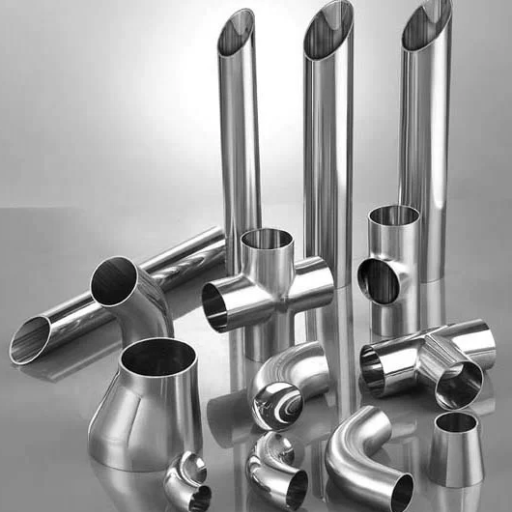
Sanitary A270 tubing adheres to strict ASTM standards, ensuring it meets the requirements for applications in the food, beverage, pharmaceutical, and biotechnology industries. This tubing is manufactured from high-grade stainless steel, typically 304 or 316L, which offers excellent corrosion resistance, durability, and ease of cleaning. Key specifications include precise dimensional tolerances, such as consistent wall thickness and inner surface roughness, often required to be ≤ 20 µin Ra for a smooth finish to mitigate microbial contamination risks. Welded and seamless options are available, with seamless tubing often preferred in critical environments due to its uniform strength and reduced chance of defects. Compliance with certifications like ASME-BPE ensures the tubing meets stringent hygienic and operational standards, making it critical for maintaining product purity and process integrity.
What is ASTM A270 S2?
ASTM A270 S2 is a specification under the American Society for Testing and Materials (ASTM) standards, specifically governing sanitary tubing used in industries such as food, beverage, pharmaceutical, and biotechnology. The “S2” designation refers to a supplementary requirement where the tubing must undergo a process called electropolishing. This procedure enhances the inner surface finish of the tubing, reducing surface roughness to typically ≤ 20 µin Ra, as required in critical applications. Electropolishing significantly improves corrosion resistance, facilitates cleaning, and minimizes the risk of microbial contamination. Additionally, tubing that meets ASTM A270 S2 is often produced under strict quality assurance protocols to conform to hygienic and operational benchmarks, including adherence to ASME-BPE guidelines. This makes ASTM A270 S2 tubing integral for environments where maintaining high purity and cleanliness standards is of paramount importance.
Role of ASME BPE Standards
- Sanitary Design Requirements: The ASME BPE standards outline precise criteria for the design of components to ensure they meet strict sanitary requirements. This is critical in preventing contamination and ensuring biological safety in industries such as pharmaceuticals and biotechnology.
- Surface Finish Specifications: These standards define acceptable surface finishes, including electropolishing parameters, to reduce the risk of particle adhesion and microbial growth on equipment surfaces.
- Material Compliance: ASME BPE specifies the types of materials that are acceptable, ensuring they are resistant to corrosion and chemical degradation while maintaining structural integrity under rigorous operating conditions.
- Dimensional Consistency: The standards provide guidelines for dimensional tolerances of components to ensure compatibility and proper fit during system assembly, minimizing the risk of leaks or operational inefficiencies.
- Inspection and Testing Protocols: ASME BPE includes detailed protocols for the inspection and testing of components, including welds, to guarantee compliance with hygienic standards and operational performance.
Stringent Tests Required by ASME SA249
ASME SA249 mandates comprehensive testing to ensure the integrity and quality of welded austenitic stainless steel tubes. Key tests include:
- Tension Test: Verifies the mechanical properties of the material, including ultimate tensile strength and elongation limits.
- Flattening Test: Assesses the material’s ability to withstand deformation without cracking, ensuring durability under pressure.
- Hydrostatic Test: Confirms the tube’s ability to endure specified internal pressure without leaks.
- Nondestructive Examination: Techniques such as eddy current testing are employed to detect surface and subsurface defects.
These tests are critical to maintaining the performance and safety standards required by the specification.
Choosing Between Welded and Seamless Tubes
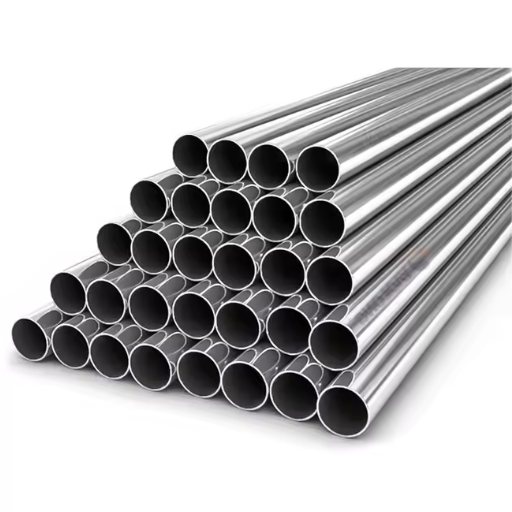
When deciding between welded and seamless tubes, it is essential to assess the specific requirements of the application. Seamless tubes are typically chosen for applications demanding higher pressure tolerance and uniform strength due to their monolithic construction. They are also preferred in environments requiring superior corrosion resistance and precision dimensions. On the other hand, welded tubes, while slightly less robust, offer better cost efficiency and are suitable for applications with moderate pressure and without stringent structural demands. The choice should be based on factors such as operating conditions, budget constraints, and the required mechanical properties.
Benefits of Welded Austenitic Stainless Steel
- Cost-Effectiveness: Welded austenitic stainless steel is generally more economical to produce compared to seamless alternatives, making it suitable for projects with budget constraints.
- Versatility in Applications: It is adaptable to a wide range of applications, including piping systems, structural components, and heat exchangers, due to its reliable performance under moderate conditions.
- Ease of Customization: The welding process allows for greater flexibility in achieving custom sizes and shapes, accommodating specific design and dimensional requirements.
- Corrosion Resistance: Like its seamless counterpart, welded austenitic stainless steel maintains excellent resistance to corrosion, which is vital for industries such as food processing, chemical handling, and marine environments.
- Availability and Lead Time: Welded tubes and pipes are typically more widely available and require shorter manufacturing and lead times compared to seamless products, ensuring quicker project turnaround.
Considerations for Seamless Tubes in Sanitary Applications
When evaluating seamless tubes for sanitary applications, I focus on several critical factors to ensure optimal performance and compliance with industry standards. First, seamless tubes provide a smoother internal surface, which minimizes the risk of bacterial growth and supports efficient cleaning processes essential for applications in pharmaceutical, food, and beverage industries. Second, I assess material compliance with regulations such as ASTM A270 or ASME BPE, as these standards guarantee the tubes meet stringent hygiene requirements. Lastly, I consider durability and pressure resistance, as seamless tubes are inherently stronger due to their non-welded construction, making them ideal for high-pressure or high-temperature environments where reliability is paramount.
Reference Sources
- ASTM A269 vs A270 Whitepaper by United Industries
- FAQ on ASTM A249, A269, A270, and A554 Stainless Steel Tubing on LinkedIn
- Difference between ASTM A249, A270, A269, and A213 by Sakysteel
- Astm-A249-A269-A270-A554-Stainless-steel-tubing PDF by Neelcon Steel
- Difference between ASTM A249, A269, A270, and A554 on LinkedIn
Frequently Asked Questions (FAQs)
Q: What are the main differences between ASTM A269 and A270 stainless steel tubing?
A: The primary differences between ASTM A269 and A270 stainless steel tubing lie in their intended applications and specifications. ASTM A269 is used for general purpose applications, while ASTM A270 is designed for sanitary applications, requiring higher quality stainless steel and stricter standards for surface finish and cleanliness.
Q: What is the significance of annealing in stainless steel tubing?
A: Annealing is a heat treatment process that alters the microstructure of stainless steel tubing to improve its ductility and reduce hardness, making it easier to work with during manufacturing and installation. It also helps relieve internal stresses and improve corrosion resistance.
Q: How does ASTM A249 relate to A269 and A270 tubing?
A: ASTM A249 covers welded austenitic stainless steel tubing for boiler, superheater, heat exchanger, and condenser systems. While related, A249 has specific requirements for heat-resisting applications, differing from A269 and A270, which focus on general and sanitary purposes, respectively.
Q: What makes stainless steel sanitary tubing different from other tubing?
A: Stainless steel sanitary tubing is specifically designed for applications requiring high purity and cleanliness, such as in the food, beverage, and pharmaceutical industries. It must meet strict standards for surface finish and material quality to prevent contamination and facilitate cleaning.
Q: Why is ASTM A270 tubing preferred for sanitary applications?
A: ASTM A270 tubing is preferred for sanitary applications because it meets rigorous specifications for surface finish, cleanliness, and material quality. This ensures that the tubing can maintain the integrity and purity required in industries like food processing and pharmaceuticals.
Q: What role does the OD (outer diameter) play in selecting stainless steel tubing?
A: The OD, or outer diameter, is a critical factor in selecting stainless steel tubing as it determines the flow capacity and compatibility with other system components. Specific applications, especially those requiring precision, demand exact OD measurements to ensure proper functionality and fit.
Q: How does the ASTM A270 S2 specification differ from standard A270?
A: The ASTM A270 S2 specification includes additional requirements for electropolished surfaces, which are often necessary in high-purity applications. This specification ensures a higher level of surface smoothness and cleanliness, ideal for industries with stringent sanitary requirements.
Q: What is the importance of polished tubing in sanitary applications?
A: Polished tubing is crucial in sanitary applications because it minimizes surface roughness, reducing the risk of bacterial growth and contamination. A smooth surface also facilitates easier cleaning and maintenance, ensuring compliance with health and safety standards.
Q: What tests are typically required for ASTM A269 and A270 tubing?
A: For ASTM A269 and A270 tubing, a range of tests are typically required, including the full battery of ASTM bend and deformation tests required by ASME. These tests ensure that the tubing can withstand physical stress and maintain its integrity under operating conditions.
Q: Can you explain the relevance of a profilometer reading at 90 degrees for stainless steel sanitary tubing?
A: A profilometer reading at 90 degrees measures the surface roughness of stainless steel sanitary tubing. This measurement is vital for ensuring the tubing meets the required standards for smoothness, which is crucial for preventing bacterial growth and ensuring easy cleaning in sanitary environments.

